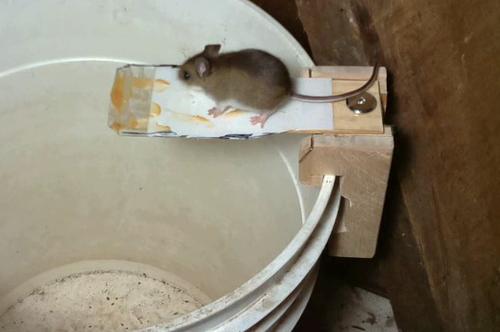 In its first five months, my
build a better mouse trap
video has got four million views on YouTube.
In its first five months, my
build a better mouse trap
video has got four million views on YouTube.
 In its first five months, my
build a better mouse trap
video has got four million views on YouTube.
In its first five months, my
build a better mouse trap
video has got four million views on YouTube.
I didn't go into any detail on how to build the trap in the video. In fact, I just went into the shop with a vague idea and started cutting, so the design is not optimal, but it works.
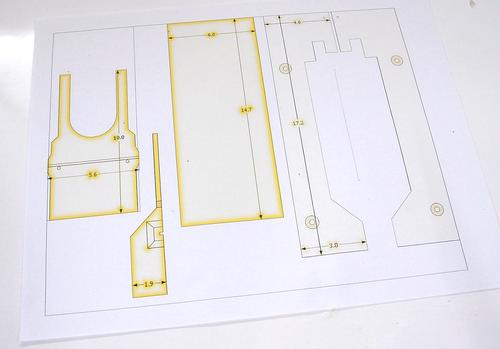 So I set out to simplify and optimize the design to make it easier to build.
This time I even drew it up in SketchUp.
So I set out to simplify and optimize the design to make it easier to build.
This time I even drew it up in SketchUp.
At left, 1:1 printouts on one page which I took into the shop.
You can download an improved version
of this template for free.
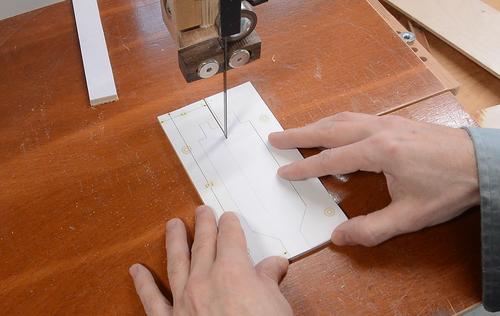 The two pieces on the right in the picture above are 1/4" plywood. I used some
glue stick to stick the templates onto some 1/4" plywood and cut them out
on the bandsaw.
The two pieces on the right in the picture above are 1/4" plywood. I used some
glue stick to stick the templates onto some 1/4" plywood and cut them out
on the bandsaw.
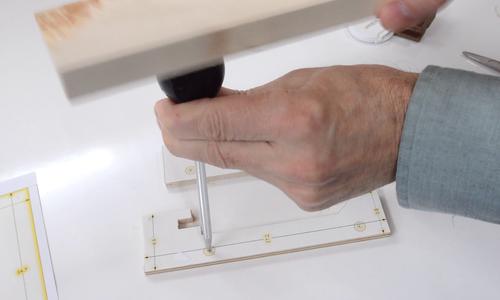 Punching divots where the holes need to go by hitting the back of an awl with
a piece of wood ...
Punching divots where the holes need to go by hitting the back of an awl with
a piece of wood ...
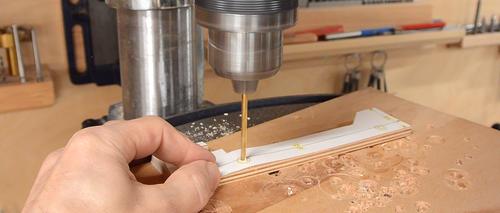
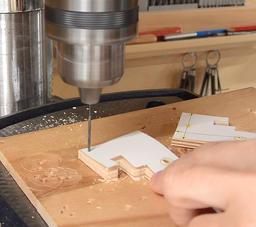 ... then drilling them. Two larger holes for wood screws, and tiny hole
in the corner for a pivot.
... then drilling them. Two larger holes for wood screws, and tiny hole
in the corner for a pivot.
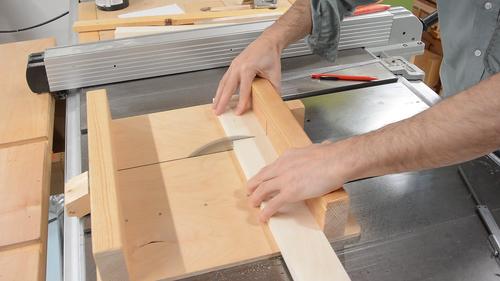 Then cutting out the two pieces of solid wood. One is just a rectangular
block with a few holes drilled into the sides and the back.
Then cutting out the two pieces of solid wood. One is just a rectangular
block with a few holes drilled into the sides and the back.
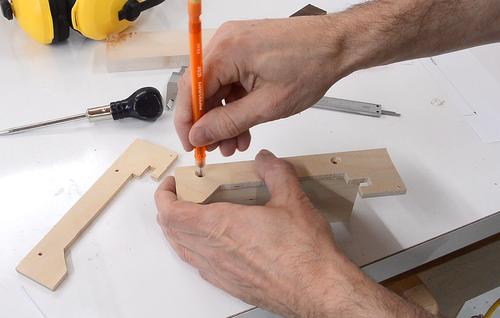
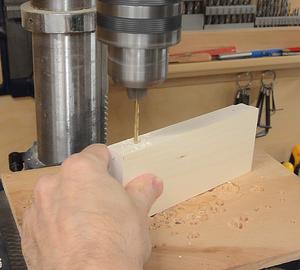 I mark the screw hole locations through the side pieces that I cut
and drilled earlier, then drill pilot holes for the screws.
I mark the screw hole locations through the side pieces that I cut
and drilled earlier, then drill pilot holes for the screws.
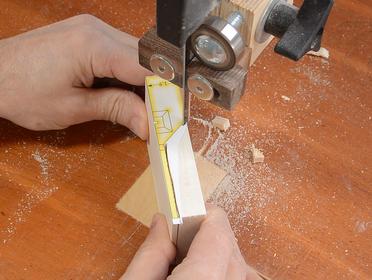
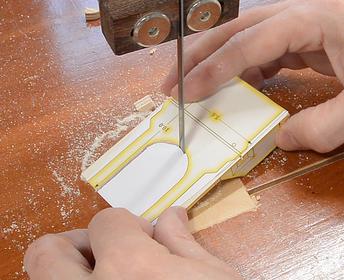 Cutting out the ramp piece. This is the most complicated part of
the trap, with a side profile and a fairly complex shape from the top.
Cutting out the ramp piece. This is the most complicated part of
the trap, with a side profile and a fairly complex shape from the top.
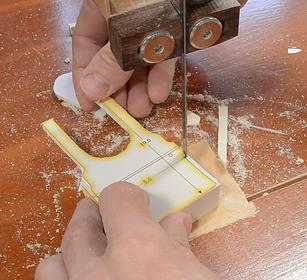
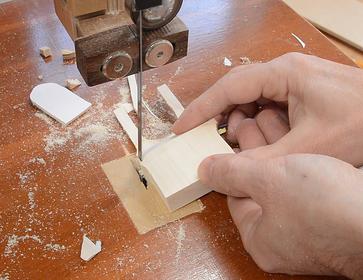 The ramp piece has "bumps" on either side to make sure other parts of it
won't rub against the bracket that it pivots inside of.
The ramp piece has "bumps" on either side to make sure other parts of it
won't rub against the bracket that it pivots inside of.
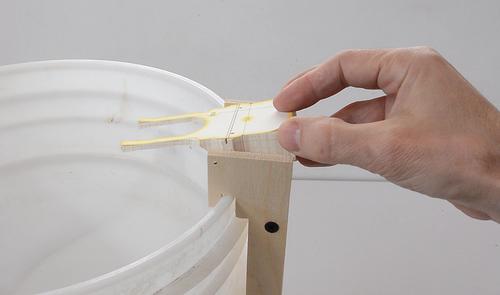 This piece mounts in the bracket like this eventually.
This piece mounts in the bracket like this eventually.
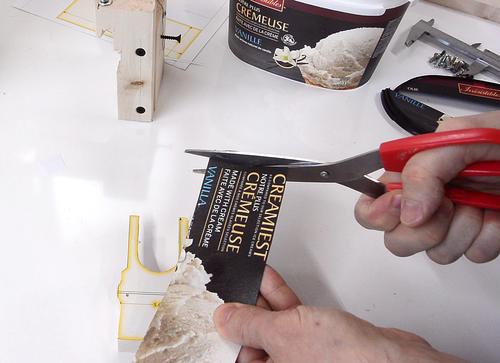
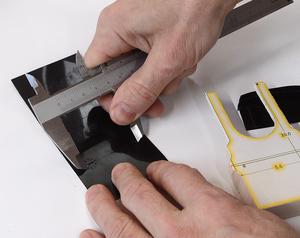 But first I need a plastic top. I use plastic
so the mouse can't easily hang onto it when the ramp tips.
I'm cutting this one out of an empty ice cream container lid.
But first I need a plastic top. I use plastic
so the mouse can't easily hang onto it when the ramp tips.
I'm cutting this one out of an empty ice cream container lid.
I used my callipers to copy the hole geometry onto the plastic and drilled them out.
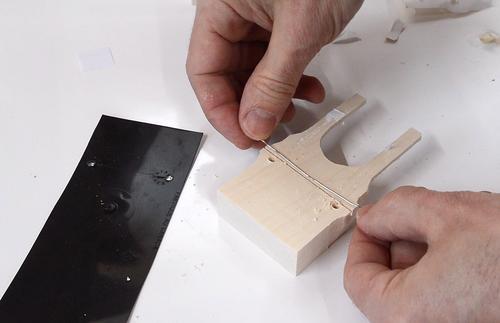
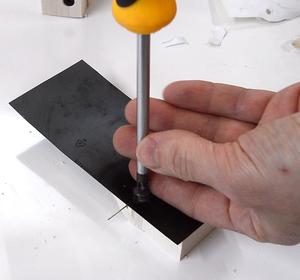 A straightened out paper clip goes into the slot (which I cut
on the bandsaw) and acts as a pivot.
A straightened out paper clip goes into the slot (which I cut
on the bandsaw) and acts as a pivot.
Two screws with wide heads secure the plastic in place and lock the paper clip wire in the slot.
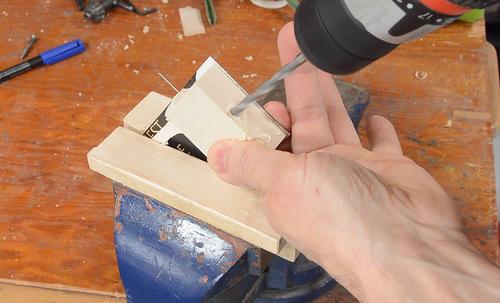
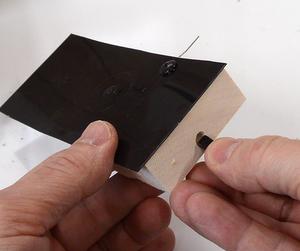 I still need to install a magnet in the back before mounting the pivot
ramp. I drill a hole for a tight fit for the small magnet I will use.
I still need to install a magnet in the back before mounting the pivot
ramp. I drill a hole for a tight fit for the small magnet I will use.
The magnet is one I saved from an older style SoniCare toothbrush head. It's not very powerful, but I really don't need a strong magnet.
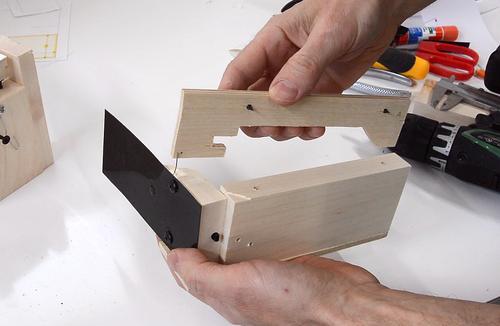 Then installing the ramp in the bracket and screwing the other half on,
locking it in place.
Then installing the ramp in the bracket and screwing the other half on,
locking it in place.
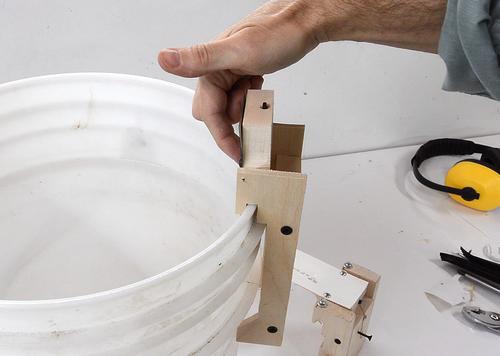
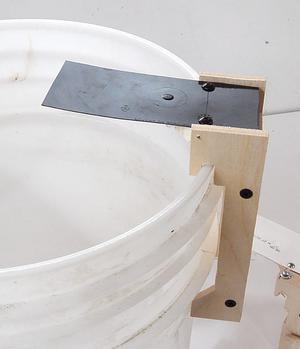 If tipped all the way down, the ram needs to come back up on its own.
This way, the trap resets itself to catch more than one mouse.
If tipped all the way down, the ram needs to come back up on its own.
This way, the trap resets itself to catch more than one mouse.
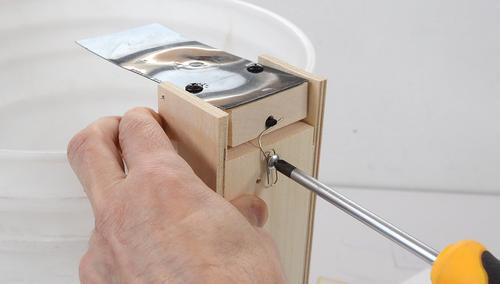
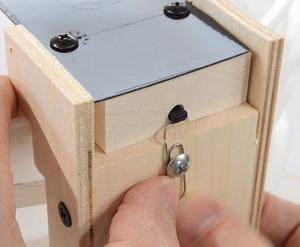 Then installing another paper clip to touch the end of the magnet in
the back. This takes some tweaking to get the attractive force just right.
Too much and it never dumps the mouse, too little and it releases
before the mouse is far enough down the ramp.
Then installing another paper clip to touch the end of the magnet in
the back. This takes some tweaking to get the attractive force just right.
Too much and it never dumps the mouse, too little and it releases
before the mouse is far enough down the ramp.
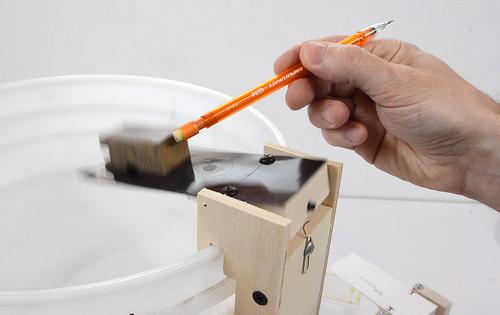 According to online sources, a house mouse weighs about 20 grams
(two thirds of an ounce).
According to online sources, a house mouse weighs about 20 grams
(two thirds of an ounce).
When a block of wood of this weight is carefully pushed along the ramp, it should trip once the block is half to two thirds of the way out. The block I'm testing with is some very dense hardwood, a typical wood block would have to be larger to have this weight.
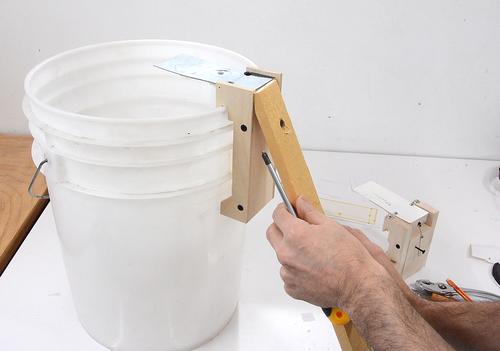
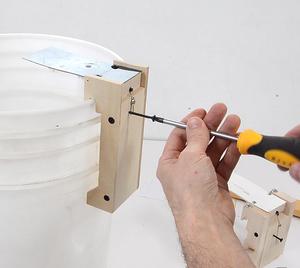 Finally, the mouse needs a way to get up to the ramp. I have a screw
sticking out the back, and put a wood with a hole in it to lean
over the screw.
Finally, the mouse needs a way to get up to the ramp. I have a screw
sticking out the back, and put a wood with a hole in it to lean
over the screw.
The bait I typically use is peanut butter smeared to the end of the ramp, with some trace amounts smeared to the wood leading up to the ramp.
Based on previous observations, a mouse can just barely jump out of a bucket, though it can take an hour of trying before it succeeds.
Traps like this are typically used with some water in the bottom to drown the mouse and prevent it from jumping out. If you aren't from the country and never had mouse problems, you probably consider this cruel. In that case, it would be good to put about 2-3 cm of sawdust or kitty litter into the bottom of the bucket. It's much harder to jump high from a soft surface so even though the mouse is a little closer to the rim, it's very unlikely to make it out. And then you can release the mouse somewhere else and either have it die from exposure or lack of shelter, or you can make the mouse someone else's problem, but at least you didn't kill it.
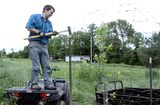 Anti-deer tree cage
Anti-deer tree cage